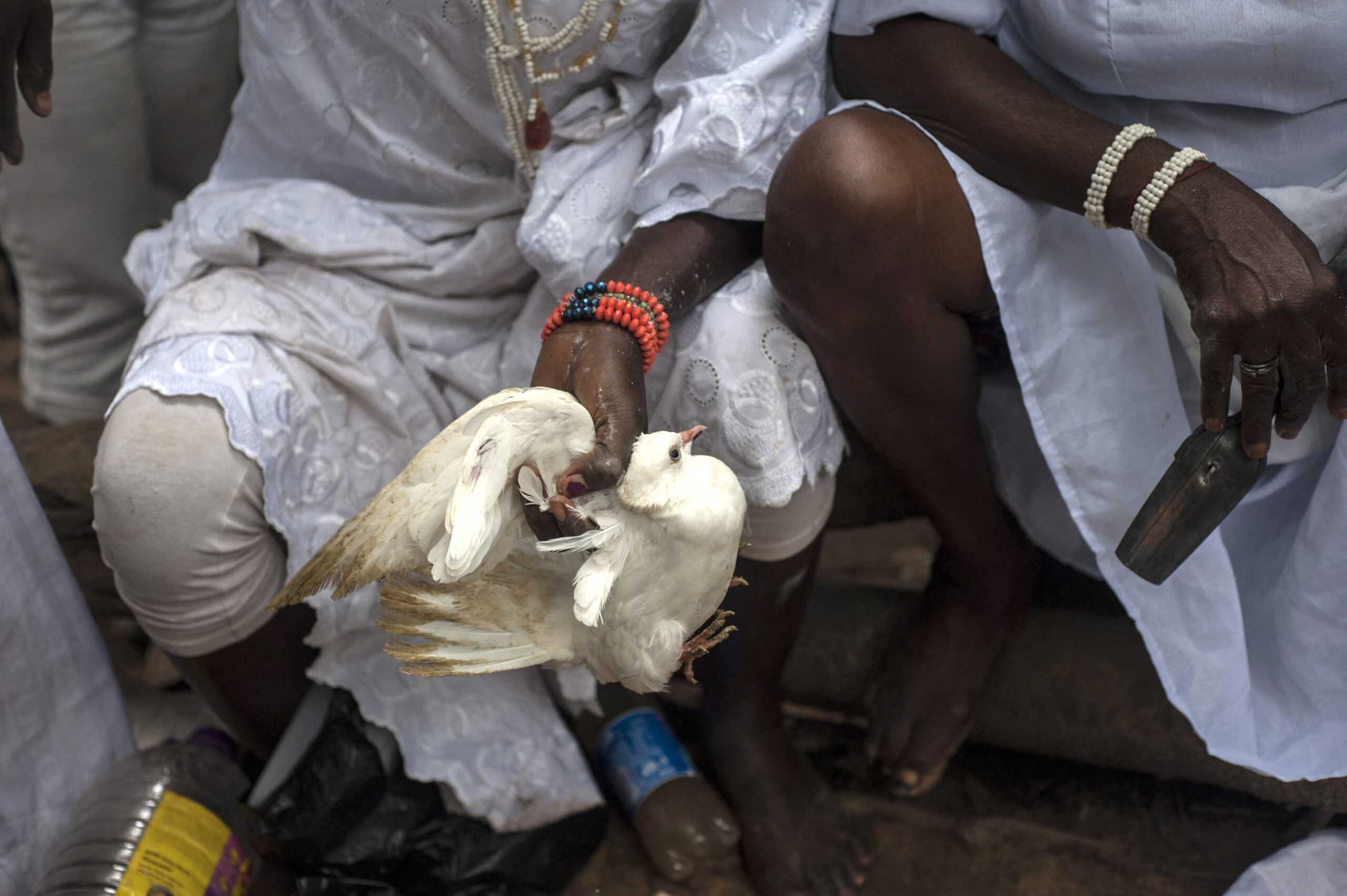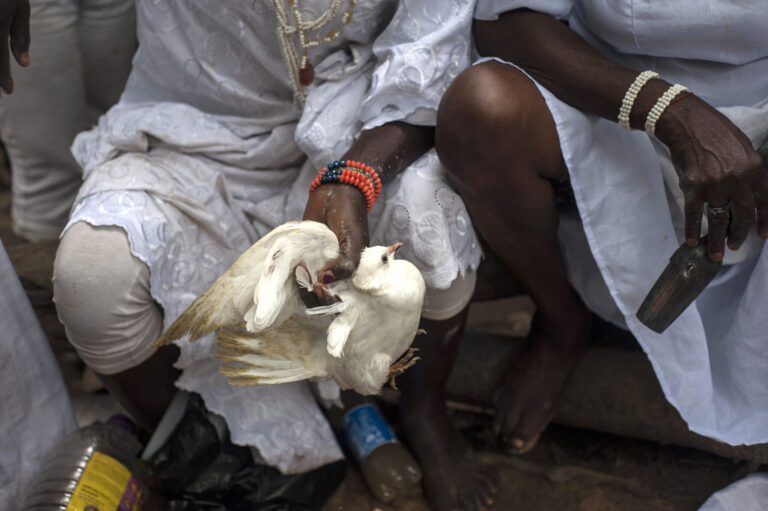Via Olamipe Cole
August 27, 2024 | 4:32 PM
In July, information circulated that media managers of the Osun Osogbo Pageant had banned media shops from broadcasting, publishing or utilizing any content material from the 2024 version of the annual occasion with out prior approval from the organisers. This was the primary time such a restriction had been made. See extra details in regards to the Osun-Osogbo competition: celebrating…


In July, information circulated that media managers of the Osun Osogbo Pageant had banned media shops from broadcasting, publishing or utilizing content material from the 2024 version of the annual occasion with out prior approval from the organisers. This was the primary time such a restriction had been made. See extra details about Osun-Osogbo competition: celebrating Yoruba tradition and spirituality.
What adopted was swift and widespread condemnation by little children of Osun State, for whom the competition is critical. This pressured the state authorities to concern a disclaimer. Such is the importance of the competition to the individuals of Osun State and Yoruba land at giant. “It’s a sacred competition for the Yoruba race and the normal rulers of Osogbo,” Adebisi Obawale, a former Commissioner for Tradition and Tourism within the state, mentioned.
READ ALSO: Which of those 6 conventional Nigerian festivals are you aware?
Yearly, the town of Osogbo in Osun State, Nigeria comes alive with a vibrant and deeply religious competition. The competition attracts hundreds of Yorubas, an historical ethnic group in West Africa that numbers round 40 million individuals, the overwhelming majority of whom stay in Nigeria. The competition is at all times a two-week celebration. It’s held in August. This 12 months, it ended on August 9. It’s devoted to Osun, the Yoruba goddess of fertility, love and wonder. The competition has important cultural and non secular significance. It is usually a novel perception into the wealthy traditions and beliefs of the Yoruba individuals.
Historic roots
Osun State has a big Muslim and Christian inhabitants, with a few of Nigeria's best-known preachers hailing from there. But the Osun-Osogbo Pageant is a significant crowd-puller yearly and has been celebrated for a whole bunch of years. “Conventional faith has not been killed by trendy faith as a result of it’s too deeply rooted among the many Yoruba individuals to be destroyed,” researchers Saskia Cousin and Jean-Luc Martineau mentioned within the tutorial journal Cahiers d'Etudes Africaines.
The competition’s origins date again over 600 years. It commemorates the sacred pact between the primary monarch of Osogbo, Oba Gbadewolu Laroye, and the river goddess Osun. Legend has it that upon arriving on the Osun River, the early settlers met the goddess, who provided them safety and prosperity in return for normal worship. This pact laid the inspiration for the annual competition, which nonetheless honours this bond.
The competition is a vibrant showcase of Yoruba tradition, combining conventional music, dance, artwork and spirituality. It begins with a cleaning ritual often known as Iwopopo, which purifies the city and its individuals. That is adopted by the lighting of the 16-pointed lamp known as Olojumerindinlogun. This symbolizes the official begin of the competition and the lighting of the trail to the Sacred Grove of Osun.
The Sacred Forest is positioned on the outskirts of Osogbo. The dense forest is believed to be residence to the goddess Osun. Importantly, UNESCO declared the location a World Heritage Web site in 2005. Shrines, sculptures and artworks in honour of Osun and different deities adorn the forest and the meandering river.” The religious and ecological significance of the forest makes it a focus of the competition.
READ ALSO: Osun confirms two Mpox instances
The procession and rituals
The grand procession, often known as Arugba, is a central spotlight of the competition. A virgin woman, chosen from the royal lineage, carries a sacred gourd on her head. Her face can also be coated with a scarlet material embroidered with shells. She heads to the river the place the spirit of the water goddess lives. This gourd comprises choices to Osun, and the woman’s journey by the city to the Sacred Grove is claimed to deliver blessings to the group. The procession is accompanied by drumming, singing and dancing, creating a strong, communal expertise that connects contributors to their ancestral heritage.
Within the forest, monks and priestesses carry out rituals and supply prayers to Osun. These ceremonies invoke the goddess’s blessings, bringing fertility, well being, and prosperity to the contributors and their households. Devotees search Osun’s favor, current choices, and make private vows in change for her safety and steerage.
READ ALSO: Physician Highlights Scientific, Non secular Influence of Fasting for Muslims
Non secular and ecological dimensions
The Osun-Osogbo Pageant is just not solely a cultural occasion but in addition a profound religious journey. It reinforces the Yoruba perception within the interconnectedness of the bodily and religious worlds. Osun, because the deity of water and fertility, symbolizes the life-giving and sustaining forces of nature. The rituals of the competition emphasize the significance of sustaining concord with these forces, reflecting a deep respect for the setting.
The Sacred Grove itself is a testomony to this ecological consciousness. As a protected space, it preserves a novel ecosystem and serves as a refuge for numerous plant and animal species. The preservation of the grove is integral to the competition and highlights the Yoruba dedication to environmental stewardship.
World enchantment and modern relevance
Though rooted in historical traditions, the Osun-Osogbo Pageant has gained world recognition and attracts vacationers, students and tradition lovers from everywhere in the world. It serves as a platform for cultural change and showcases the richness of the Yoruba heritage on a world stage.
In modern Nigeria, the competition is very related as a supply of cultural pleasure and group resilience. Amid financial and social challenges, the competition presents a second of collective reflection and rejuvenation. It strengthens communal bonds, fosters a way of id and conjures up hope for the long run.
